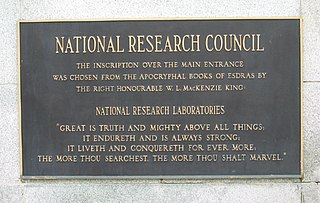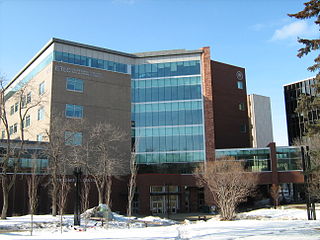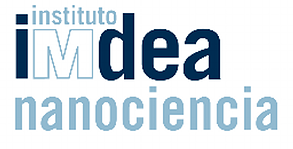
Nanotechnology, also shortened to nanotech, is the use of matter on an atomic, molecular, and supramolecular scale for industrial purposes. The earliest, widespread description of nanotechnology referred to the particular technological goal of precisely manipulating atoms and molecules for fabrication of macroscale products, also now referred to as molecular nanotechnology. A more generalized description of nanotechnology was subsequently established by the National Nanotechnology Initiative, which defined nanotechnology as the manipulation of matter with at least one dimension sized from 1 to 100 nanometers. This definition reflects the fact that quantum mechanical effects are important at this quantum-realm scale, and so the definition shifted from a particular technological goal to a research category inclusive of all types of research and technologies that deal with the special properties of matter which occur below the given size threshold. It is therefore common to see the plural form "nanotechnologies" as well as "nanoscale technologies" to refer to the broad range of research and applications whose common trait is size.

The University of Alberta, also known as U of A or UAlberta, is a public research university located in Edmonton, Alberta, Canada. It was founded in 1908 by Alexander Cameron Rutherford, the first premier of Alberta, and Henry Marshall Tory, the university's first president. It was enabled through the Post-secondary Learning Act.

The National Research Council Canada is the primary national agency of the Government of Canada dedicated to science and technology research & development. It is the largest federal research & development organization in Canada.
The Northern Alberta Institute of Technology (NAIT) is a polytechnic and applied sciences institute in Edmonton, Alberta, Canada. NAIT provides careers programs in applied research, technical training, applied education, and learning designed to meet the demands of Alberta's technical and knowledge-based industries. NAIT offers approximately 120 credit programs leading to degrees, applied degrees, diplomas, and certificates. As of 2018, there are approximately 16,000 students in credit programs, 12,000 apprentices registered in apprenticeship training, 14,500 students enrolled in non-credit courses, and more than 20,000 registrants for customized corporate based training. NAIT also attracts international students from 94 countries. NAIT is similar to an Institute of technology or university of applied sciences as termed in other jurisdictions. The campus newspaper, the NAIT Nugget, is a member of the Canadian University Press (CUP).
Sir Mark Edward Welland, is professor of nanotechnology at the University of Cambridge and head of the Nanoscience Centre. He has been a fellow of St John's College, Cambridge, since 1986 and started his career in nanotechnology at IBM Research, where he was part of the team that developed one of the first scanning tunnelling microscopes. He was elected as the master of St Catharine's College, Cambridge and took up office on 1 October 2016.
The history of nanotechnology traces the development of the concepts and experimental work falling under the broad category of nanotechnology. Although nanotechnology is a relatively recent development in scientific research, the development of its central concepts happened over a longer period of time. The emergence of nanotechnology in the 1980s was caused by the convergence of experimental advances such as the invention of the scanning tunneling microscope in 1981 and the discovery of fullerenes in 1985, with the elucidation and popularization of a conceptual framework for the goals of nanotechnology beginning with the 1986 publication of the book Engines of Creation. The field was subject to growing public awareness and controversy in the early 2000s, with prominent debates about both its potential implications as well as the feasibility of the applications envisioned by advocates of molecular nanotechnology, and with governments moving to promote and fund research into nanotechnology. The early 2000s also saw the beginnings of commercial applications of nanotechnology, although these were limited to bulk applications of nanomaterials rather than the transformative applications envisioned by the field.

The Institute for Quantum Computing (IQC) is an affiliate scientific research institute of the University of Waterloo located in Waterloo, Ontario with a multidisciplinary approach to the field of quantum information processing. IQC was founded in 2002 primarily through a donation made by Mike Lazaridis and his wife Ophelia whose substantial donations have continued over the years. The institute is now located in the Mike & Ophelia Lazaridis Quantum-Nano Centre and the Research Advancement Centre at the University of Waterloo.

The University of Alberta Faculty of Engineering is one of the largest engineering schools in Canada in terms of size, international impact, and reputation. The faculty is home to 1 Canada Excellence Research Chair, 16 Canada Research Chairs, 13 Natural Sciences and Engineering Research Council chairs, and 5 Foundation Supported Chairs.
Expenditures by federal and provincial organizations on scientific research and development accounted for about 10% of all such spending in Canada in 2006. These organizations are active in natural and social science research, engineering research, industrial research and medical research.
Expenditures by Canadian universities on scientific research and development accounted for about 40% of all spending on scientific research and development in Canada in 2006.
This article outlines the history of natural scientific research in Canada, including physics, astronomy, space science, geology, oceanography, chemistry, biology, and medical research. Neither the social sciences nor the formal sciences are treated here.
The Waterloo Institute for Nanotechnology (WIN) is located at the University of Waterloo and is co-located with the Institute for Quantum Computing in the Mike and Ophelia Lazaridis Quantum-Nano Centre (QNC). WIN is currently headed by Dr. Sushanta Mitra.

The Istituto Italiano di Tecnologia (IIT) is a scientific research centre based in Genoa . Its main goal is the advancement of science, in Italy and worldwide, through projects and discoveries oriented to applications and technology. Some account IIT as the best Italian scientific research centre.

CEITEC is the European Research Center for Life Science, Advanced Materials and Nanotechnology. CEITEC was founded by a group of Brno universities and research institutes and supported by both the South Moravian Region and the city of Brno. Within CEITEC, a number of laboratories were built with instrumentation and facilities.
The Center for Nanotechnology in Society at the University of California at Santa Barbara (CNS-UCSB) is funded by the National Science Foundation and "serves as a national research and education center, a network hub among researchers and educators concerned with societal issues concerning nanotechnologies, and a resource base for studying these issues in the US and abroad." The CNS-UCSB began its operations in January 2006.

IMDEA Nanoscience Institute is a private non-profit foundation within the IMDEA Institutes network, created in 2006-2007 as a result of collaboration agreement between the Community of Madrid and Spanish Ministry of Education and Science. The foundation manages IMDEA-Nanoscience Institute, a scientific centre dedicated to front-line research in nanoscience, nanotechnology and molecular design and aiming at transferable innovations and close contact with industries. IMDEA Nanoscience is a member of the Campus of International excellence, a consortium of research institutes promoted by the Autonomous University of Madrid and Spanish National Research Council (UAM/CSIC).
Murali Sastry is an Indian material chemist, nanomaterial scientist and the chief executive officer of IITB-Monash Research Academy. He is a former chief scientist and Tata Chemicals and a former senior scientist at National Chemical Laboratory. He is known for his studies on surfaces, films and materials chemistry and is an elected fellow of Maharashtra Academy of Sciences and the Indian Academy of Sciences The Council of Scientific and Industrial Research, the apex agency of the Government of India for scientific research, awarded him the Shanti Swarup Bhatnagar Prize for Science and Technology, one of the highest Indian science awards, in 2002, for his contributions to chemical sciences.

Anatoly V. Zayats FInstP, FOSA, FSPIE, FRSC is a British experimental physicist of Ukrainian origin known for his work in nanophotonics, plasmonics, metamaterials and applied nanotechnology. He is currently a Chair in Experimental Physics and the head of the Photonics & Nanotechnology Group at King's College London. He is a co-director of the London Centre for Nanotechnology and the London Institute for Advanced Light Technologies
Carlo Montemagno was an American engineer and expert in nanotechnology and biomedical engineering, focusing on futuristic technologies to create interdisciplinary solutions for the grand challenges in health, energy and the environment. He has been considered one of the pioneers of bionanotechnology. Some of his fundamental contributions include the development of biomolecular motors for powering inorganic nanodevices while at Cornell and muscle-driven self-assembled nanodevices while at UCLA.









